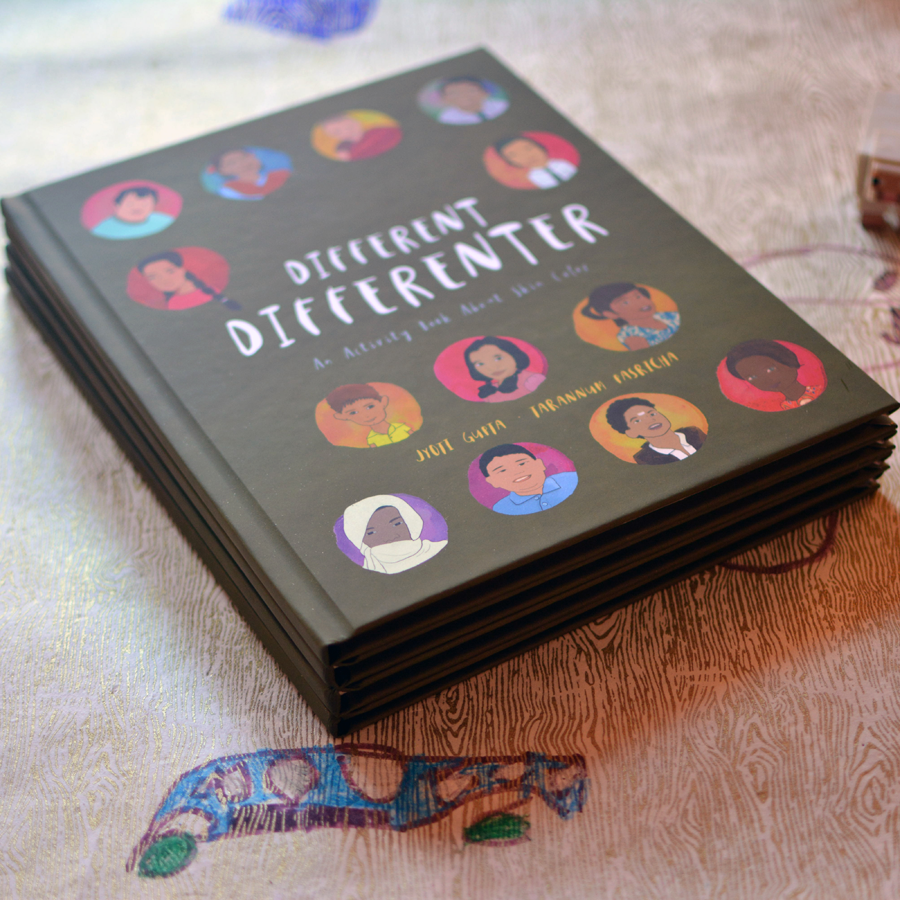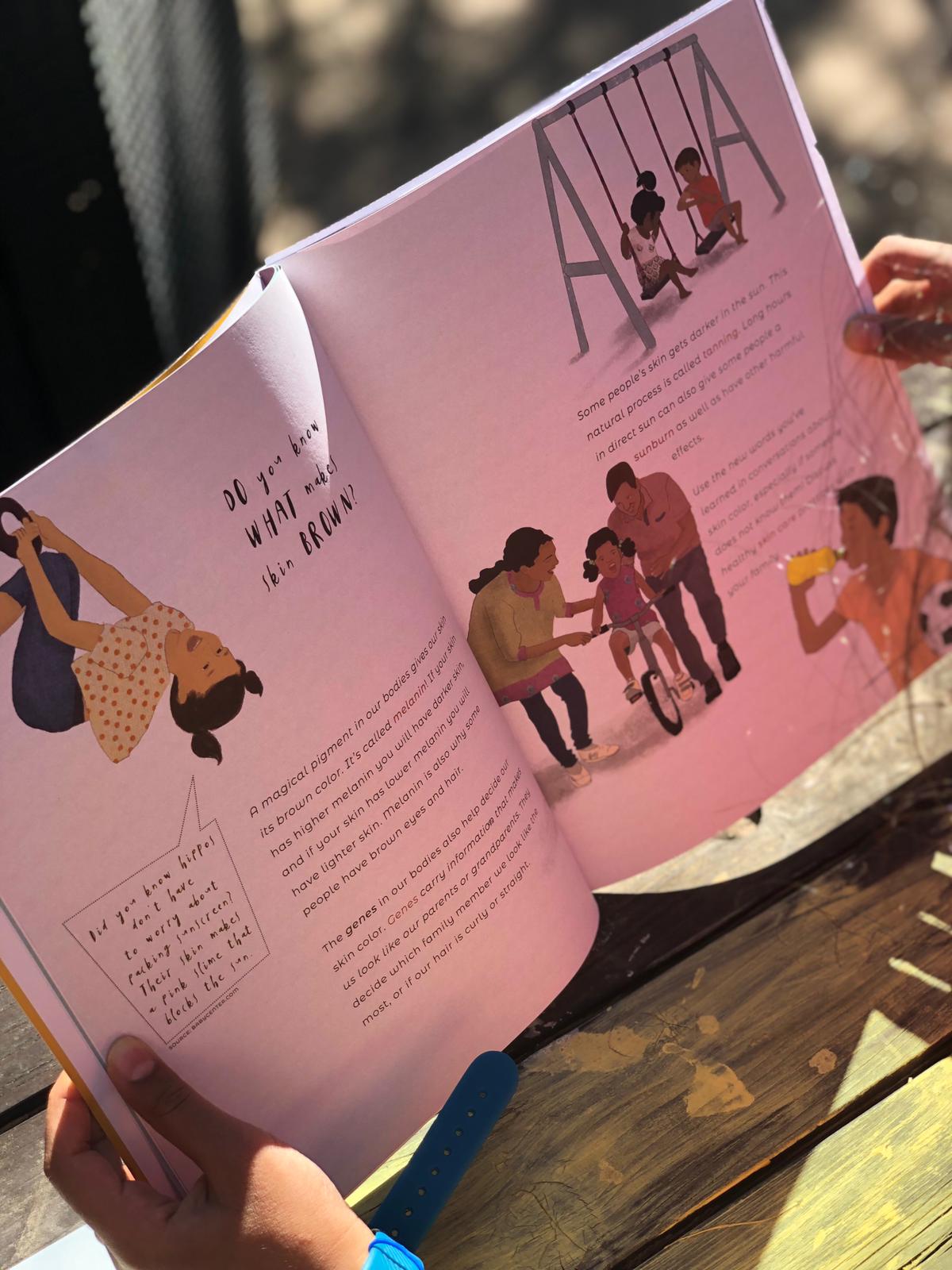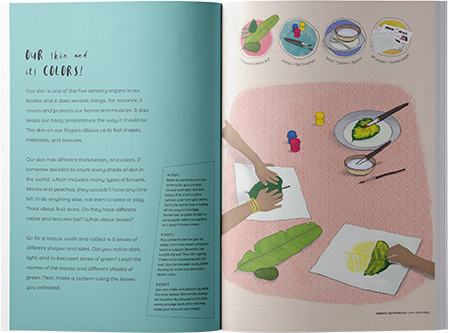- Categories
- CATEGORY
- AGE
- TYPE
Written by Jyoti Gupta and illustrated by Tarannum Pasricha, Different Differenter is a unique parent-child activity book about skin color. With every activity, the author gets us to dig deeper into our understanding of skin color, identities, misconceptions, and indeed the world. After finishing the book, interesting discoveries emerge, and of course, a whole lot of fun!

I have always understood that the skills or experiences that have lodged deeply in my daughter's mind have been the ones that we shared together. Activities, explorations, shared reading -- pretty much everything that we experienced together remains in our minds with so much clarity. For this reason, I am always seeking activity books that go beyond rote tasks and really nudge parents and children into collaborating and asking every kind of question on the planet, or in making remarkable connections.
When I read Different Differenter by Jyoti Gupta, I realized that this book is an experience that I wish every parent can have with his or her child. One of the ideas that it explores is all about skin color and as we all know, this is a topic that is very relevant to children all over the world today, with children living in different parts of the world and with cultures interacting in memorable ways.
The book was crowd-funded by the author's community and she self-published it this spring.

A parent-child activity book that presents creative modules to facilitate independent thinking among children, Different Differenter is primarily about identities as seen through skin color, and about the differences that make us interesting. The book is presented in the form of collaborative activities, projects, and readings. It also has ideas for discussions that help us experience a child's world through play. The book is a result of the author's careful deliberations, discussions, research and conversations with people from different cultures and identities.
Different
As soon as I saw the cover, I loved how it reflected various identities --children not just with different skin tones or from different countries, but, I was delighted to see, children with neuro diversities. What is interesting is that when my daughter saw the cover, she did not remark on how the cover is special because of these differences. To her, this is normal, and she has internalized differences because of the diversity of the books we read together. This is precisely what the book wants our children to do -- to internalize differences and to understand the world completely.
As soon as I saw the cover, I loved how it reflected various identities --children not just with different skin tones but even with neuro diversities. What is interesting is that when my daughter saw the cover, she did not remark on how the cover is special because of these differences. To her, this is normal.
Amazing projects

The book begins with a beautiful leaf impression craft that makes children seek leaves and observe how differently colored yet similar they all are. The author then draws this image to other ideas. Much like fingerprints and even tongue prints, skin color is very unique and differs from person to person. I also love how she writes that genes carry information that makes us look like our parents. Another beautiful example that the author gives is about why some people are light-skinned and some people have darker skin. People in hot places produce more melanin to block the sun's harmful rays. The author compared this to how turtles and other animals adapt and change to suit their surroundings.
I also loved how the author connected a person's skin color and identity to food and culture (even laddoos are different in different places!) and we loved the laddoo-making activity.
Apart from the superb mixed media projects that the book has, I loved the simple yet powerful thought and social experiments that it suggests. For example, people may dress differently, eat differently, and are from different cultures. so when you visit someone's house next time see what they have at home, the paintings, how differently they live and what they do differently. This was something that my daughter understood so vividly because she has friends from different economic and cultural backgrounds.
I also liked how the book urged children to understand and talk about things, especially differences. Have you been hurt for being different? What did you do? Gently and with great intelligence, the book connects this with important conversations on caste and suppression. The way it does this is not didactic or even verbose but with many different activities. For instance, there is a picture of people on the road -- bus drivers, car drivers, pedestrians, vendors and more. There were many things that were wrong about the picture -- for example, the policeman ordering the rickshaw driver, and other instances of class struggles and inequality. The children have to identify what's wrong with the picture. I loved how this exercise is a much worthier improvement on the 'spot the differences' or 'spot the similarities' exercises that most activity books employ. Logical reasoning is all very well but thinking with non-linearity, inclusion, and empathy -- these are the genuine gifts in children.
The book has interesting activities on analyzing advertisements and really gets children to view skin color very differently.
As for why kids are mean to each other and talking to people whom you trust, I have never read such simple, lucid and relateable explanations.
My favorite activity? It is to get the adult or parent to pretend that he or she is a child who has come back from school and is sad because he or she was bullied. So the children are to imagine that they are the parent and so, how will they make this person feel better?
Again, I loved and noticed so many things about the illustrations that point to so many vital differences in the parents and children portrayed. For example, there is a picture of a man clearing the table and another man talking to a child that really moved me. Are they a family? Are they relatives or acquaintances in the same house for a weekend visit, maybe? The beauty of this is that we look at these as unique and something to be singled out but our children internalize it so powerfully that these differences become part of their world. I also loved the exercises on self-portraiture, which are so similar to the beautiful Toka Box that we did in January.
I also liked the activity on analyzing ads and getting to what they are not saying, right from skin color and fashionista app adds to something that advertises itself as a 'healthy doughnut.'
The book is so engaging, fun, inventive and creative that you and your child will feel a sense of